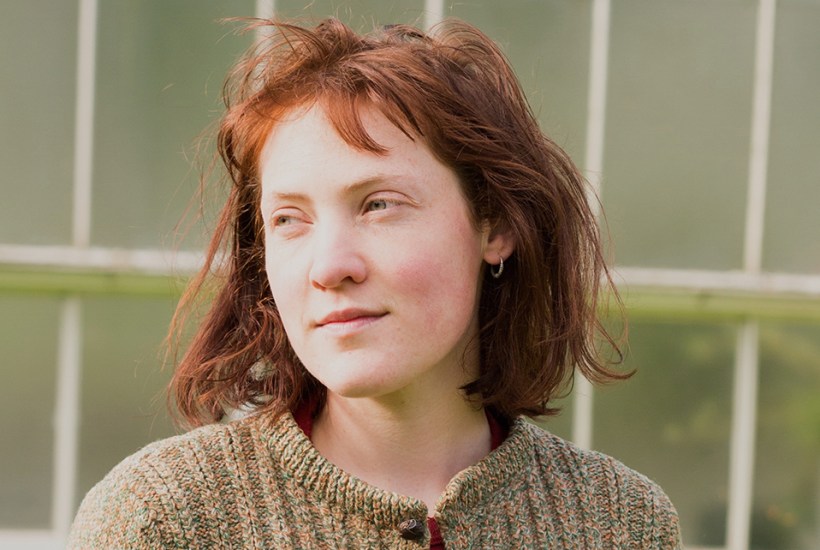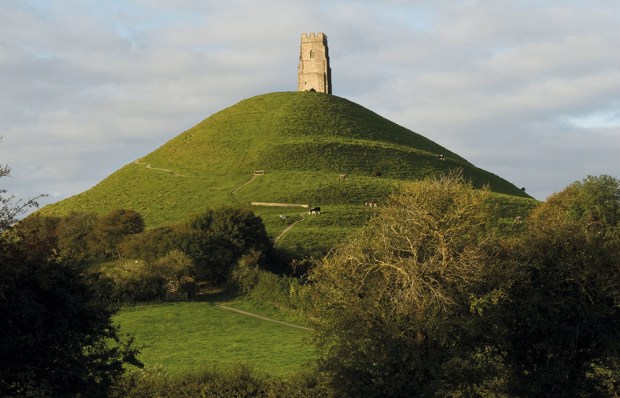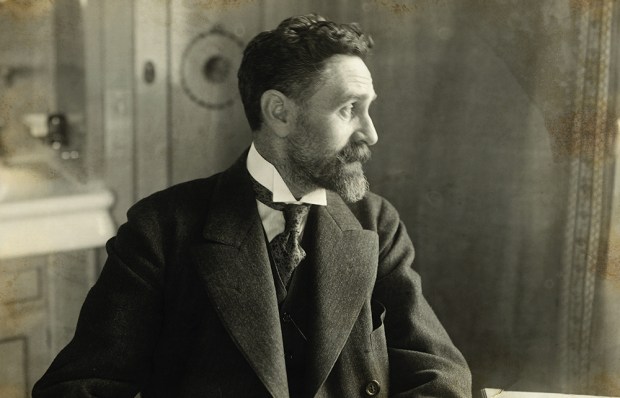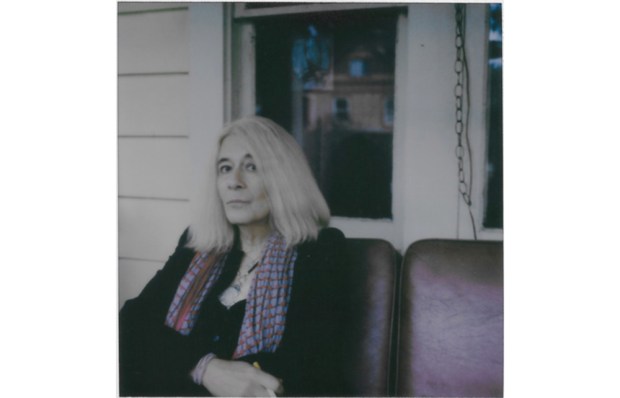‘Islands of stone’ would have been a good name for the Orkney archipelago, George Mackay Brown once wrote. The salt Atlantic winds mean that very few trees grow there, so stone provides for the dead – in the burial chamber at Maeshowe, for example – and the living. Less than a century ago, there were Orcadians sleeping in stone box beds.
For Beatrice Searle, one Orkney stone proved life-changing. While still a teenager, she felt the stirrings of a vocation to work with stone. It spoke to her, almost literally: ‘There is information to be found in the sound of the stone, just-audible messages from the deep past to be drawn out.’ She attempted to eat it (but ‘nothing about stone eating is instinctive’). Then she heard about the St Magnus Boat at Burwick on South Ronaldsay, a stone bearing two footprints on which Orkney’s patron saint, Magnus, is said to have skimmed across the Pentland Firth. Magnus, she discovered, was not the only ‘stone-surfing saint’. Others included St Moluag, St Ronan and St Vouga, whose stone ‘boats’ sailed them, respectively, to Lismore, to Brittany and across the Irish Sea.
But it was Magnus, and Orkney, that gripped her, and helped her address a gnawing anxiety. Searle’s work as a stonemason in Lincoln Cathedral demanded that she shore up ‘the unnatural stasis of a startling and shifting material’. ‘Fixity,’ she writes, ‘is valued higher than flux and change. And yet flux and change is what a stone does best.’
She felt a growing urge to be on the move, in the company of an Orkney stone: ‘A stone that offered union with it, to be a safe port and a moving vessel.’ On a stretch of Orkney coastline, near where Lord Kitchener drowned in a ferocious storm with more than 700 of his crew, she found a 40kg siltstone, which she christened the Orkney Boat, and on which she chiselled two footprints. And in the summer of 2017, aged 26, she transported it to Norway and headed off with it to walk the 500-mile way from Oslo to Trondheim, trodden by pilgrims for over five centuries, and leading directly through the mountains to Nidaros Cathedral. It is a road that’s been taken by almost every Norwegian king, and it offered Searle the opportunity to be ‘Queen in my own piece of Orcadian land wherever I was’. Her motivation, though perplexing, is profound and passionate. Round Ireland with a Fridge this is not.
Archaeologists now believe that in creating some of Orkney’s most spectacular neolithic sites – the stone circle at Brodgar, for example – massive stones were transported across the land on slithery paths of seaweed. For Searle, crossing southern Norway, this is not an option. So she creates a cart on wheels, stitching herself a harness, strapped into which, like a pit pony (she’s small, 5’4”), she can drag her stone behind her. It works fine on tarmac roads and even gravel paths, but over rutted dirt tracks and long stretches of conifer forests it can feel as if the wheels are square. Quite often, they fall off.
Her task becomes Sisyphean. Thank God, then, that she has ‘T’, or ‘my walking companion’, plodding faithfully alongside her, lugging all the non-stone walking and camping gear. But, though they share a sleeping bag, for much of the time relations between them are edgy. T’s presence is problematic: ‘For me,’ Searle writes, ‘the integrity of the walk felt dependent on me being the stone’s sole mover and when that was not possible I was not easily reconciled.’
Equally uneasy is the tension she feels between her personal relationship with her stone and her duty to share it with the pilgrims she meets along the way, whom she invites to stand in its footprints and experience a moment of ‘anchorage and stability’. Strange spectacle though she and T must have made, however, most fellow pilgrims seem hardly to notice them – ‘our extreme peculiarity… made us invisible’ – and even those who accept her invitation tend to hop on to the stone and off again for only long enough to get a friend to take a snap. So eureka moments are few, and instead we keep returning to Searle’s aching ribs and burning shoulder sockets. She is a gifted writer, capable of luminous description. But there is more penance than pilgrimage.
On day 64, Searle arrives in Trondheim. There’s a week of mirth, and then it is time to take the Orkney Boat home – this time travelling on a NorthLink ferry. She slips into Orkney under cover of darkness, and, hugging her stone to her, returns it to the bay where she discovered it. Her puzzling feat accomplished, you fervently hope it will somehow continue to sustain her. George Mackay Brown again:
Blessings may break from stone, who knows how.
Got something to add? Join the discussion and comment below.
Get 10 issues for just $10
Subscribe to The Spectator Australia today for the next 10 magazine issues, plus full online access, for just $10.
You might disagree with half of it, but you’ll enjoy reading all of it. Try your first month for free, then just $2 a week for the remainder of your first year.














Comments
Don't miss out
Join the conversation with other Spectator Australia readers. Subscribe to leave a comment.
SUBSCRIBEAlready a subscriber? Log in